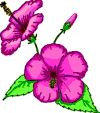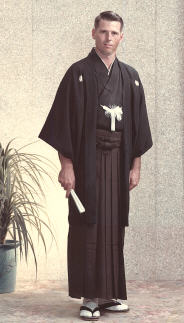TRADITIONAL OKINAWA WEDDINGS



![]()


Putting aside the Christian wedding and the Buddhist matrimonial service for the time being, I would like to introduce you how more often marriages are arranged and wedding ceremonies are performed under the Shinto system in Japan and Okinawa.
It is true that increasingly young men and women are united in marriage on their own will, through love. The practice of "Mi-Ai" is still widely observed, that end in a happy married life for many. "Mi-Ai" is an interview for a man and woman with a view to marriage. As arranged by their parents or a third party acting as a go between. "In other words a mach maker." It isproposed; with due consideration to social backgrounds and other factors to include the sign of the year they were born. It is not compulsory on either of the parties concernedto accept such "Mi-Ai" as a promise for marriage. Usually, however, in "Mi-Ai" where the prospective bride and bridegroom are more or less to make a final decision through personal impressions of each other.
"YUI-NO"
The next step is "Yui-no". "Yui-no" is a derived form of "Ii-ire" means, "to apply" It is said, that it also means that families to be united in marriage, to dine and drink together. To better explain the main reason for a Yui-no, in American views; it is a formal announcement and commitment to be married. (Engaged) This ceremony goes more in-depth between the to families than what is expressed in most countries. In any case, it is a very important function in Okinawa and Japan. At "Yui-no" gifts are exchanged between the bridegroom-to-be and bride-to-be. The main item to present to the bride-to-be is an "Obi", representing female virtue. A "Hakama" skirt is the main item presented to the bridegroom-to-be,expressing fidelity. (Note: a Obi is an a important piece of an Kimono that raps around the middle of a woman wearing a Kimono. A "Hakama" is a skirt that a man wears and wore in the olden days; It is part of a man's Kimono that is still wore to day in Okinawa and Japan.The "Yui-no" gifts include as many as nine items of happiness and fortune, if formally prepared in addition to the "Obi" and "Hakama".
Naga-Noshi
Prepared from abalones, it used to be an important and costly item, in the old barter trade. It is to express the sincere wishes of a sender, as widely used in making gifts in Okinawa and Japan.
Mokuroku
This is the list of gift delivered.
Money
Money exchanged as a ceremonial gift.
Katsuo-bushi
It is dried bonito, used in making soup stock and valued high as preserved food.
Surume
Dried Cuttlefish. "Surume" and "Katsuo-bushi" are both presented to indicate "quality" to last.
Konbu
"Konbu" tangles are included for their strong power or breeding, wishing for happy and healthy generations to follow in the family.
Shiraga
This is another name for "Asa" or hemp. Strong fibers are exchanged to signify ties and cooperation in the married life. "Shiraga" phonetically means also white hair, expressing wishes for long life together to the newly married.
Suehiro
This is A fan, and is always a symbol of happiness. As it expands to the end, suggesting a better and bigger future.
Yanagi-daru
This is a wine cask. It may be replaced by cash, as designated for
purchasing "Sake" wine."Sake" casks are usually made of "Sugi" cryptomeria but such as used in "Yui-no " is of willow trees with tender leaves. This means to pledge
obedience and gentleness the married life.
Last Updated B>